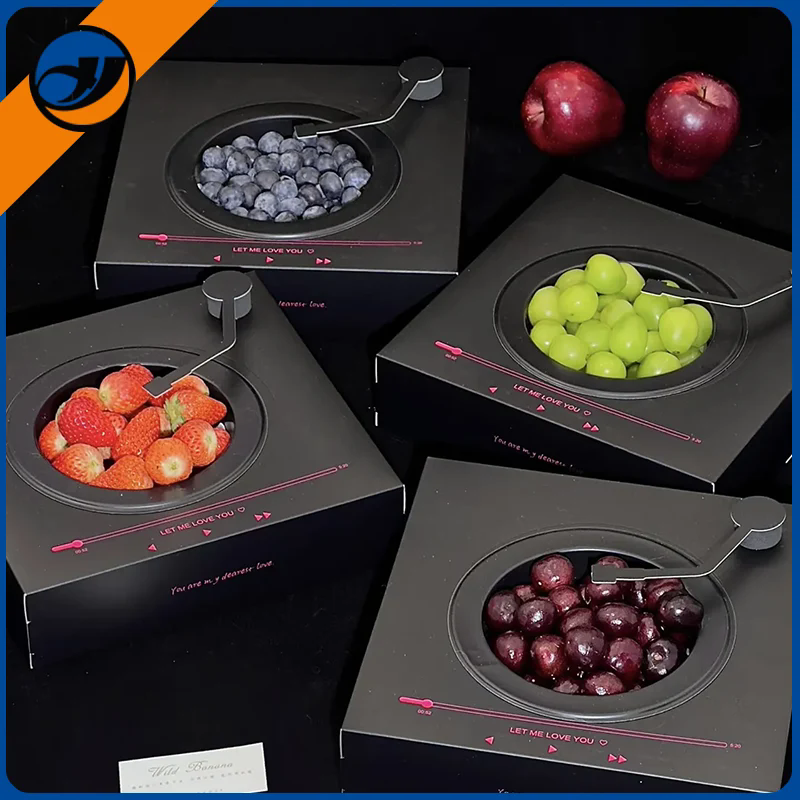What Makes Fruit Boxes Essential for Fresh Produce Preservation and Branding?
2025-08-11
In the global fresh produce industry, the journey from farm to table is fraught with challenges—maintaining freshness, preventing damage, and ensuring products arrive in optimal condition. Among the many tools that make this journey successful, fruit boxes stand out as a critical component. More than just containers, they are engineered to protect delicate fruits, extend shelf life, and even serve as a powerful branding tool for growers, distributors, and retailers. As consumers increasingly prioritize freshness, sustainability, and visually appealing packaging, understanding what makes fruit boxes indispensable has become key for businesses in the produce sector. This guide explores the vital role of fruit boxes, their key features, detailed specifications of our premium solutions, and answers to common questions to help businesses elevate their produce packaging.
Trending News Headlines: Top Searches on Fruit Boxes
- "Ventilated Fruit Boxes: How They Keep Berries Fresh Longer"
- "Custom Printed Fruit Boxes Boosting Farmer’s Market Sales"
These headlines underscore the industry’s focus on sustainability, functionality (like ventilation for freshness), and branding—all of which are central to the value that fruit boxes deliver. As the fresh produce market grows more competitive, these trends guide businesses toward packaging solutions that meet both practical needs and consumer expectations.
Why Fruit Boxes Are Indispensable for Fresh Produce Businesses
Preserving Freshness and Extending Shelf Life
The primary goal of any fruit packaging is to keep produce fresh from harvest to consumption. Fruit boxes are engineered with features that slow down spoilage, such as strategic ventilation holes that allow air circulation, preventing moisture buildup and mold growth. For example, berries like strawberries and raspberries are highly perishable and require constant airflow to maintain freshness—ventilated fruit boxes create the ideal microclimate, extending their shelf life by 3-5 days compared to non-ventilated containers. Additionally, some fruit boxes are lined with food-grade, moisture-resistant materials that absorb excess condensation, further protecting fruits from rot. This preservation capability reduces waste, ensuring that more produce reaches customers in sellable condition, which directly impacts a business’s bottom line.
Protecting Against Damage During Transit
Fresh fruits are delicate and prone to bruising, crushing, or puncturing—even minor damage can render them unsellable. Fruit boxes are constructed to provide structural support, with reinforced walls and dividers (where needed) that cushion fruits and prevent them from shifting during transportation. For instance, apples and pears benefit from boxes with internal partitions that keep each piece separate, reducing friction and bruising. Heavier fruits like melons or pineapples require sturdier boxes with thicker walls to withstand stacking in trucks or warehouses. By minimizing damage, fruit boxes help businesses reduce losses and maintain a high-quality product for customers.
Enhancing Brand Visibility and Consumer Appeal
In today’s market, packaging is a key part of a brand’s identity—especially for fresh produce, where consumers often make purchasing decisions based on visual appeal. Fruit boxes offer ample opportunities for customization, from printed logos and brand colors to detailed information like origin, harvest date, or organic certifications. A well-designed box not only distinguishes a brand from competitors but also communicates transparency and quality, building trust with consumers. For example, a small-scale farm selling at farmers’ markets can use custom-printed boxes to share its story, connecting with customers who value local, sustainable produce. Similarly, retailers can use branded fruit boxes to create a cohesive shopping experience, making their products more memorable on store shelves.
Supporting Sustainability Goals
As consumers and businesses alike prioritize environmental responsibility, sustainable packaging has become a non-negotiable. Fruit boxes, when made from eco-friendly materials, align with these goals. Many modern fruit boxes are crafted from recycled paperboard, corrugated cardboard, or biodegradable materials that decompose naturally, reducing reliance on single-use plastics. Some are even designed to be reusable—consumers can repurpose them for storage or composting, further minimizing waste. By choosing sustainable fruit boxes, businesses can reduce their carbon footprint, appeal to eco-conscious customers, and meet increasingly strict environmental regulations.
Ensuring Compliance with Safety Standards
Fresh produce is subject to strict safety and hygiene regulations to protect consumer health. Fruit boxes must meet food-grade standards, ensuring they are free from harmful chemicals, toxins, or contaminants that could leach into the fruits. High-quality fruit boxes are made from materials that are FDA-approved or compliant with international standards (such as EU 10/2011), giving businesses peace of mind that their packaging is safe for direct contact with food. Additionally, some boxes are treated with anti-microbial coatings that inhibit the growth of bacteria, further enhancing food safety—an important feature for fruits that are eaten raw, like grapes or cherries.
Key Features to Look for in Fruit Boxes
Material and Durability
The material of the fruit box directly impacts its strength and sustainability. Common options include:
- Corrugated Cardboard: Lightweight yet strong, with good cushioning properties—ideal for most fruits, especially those requiring ventilation. It is also recyclable and cost-effective.
- Paperboard: Thinner and smoother than corrugated cardboard, suitable for smaller fruits or pre-packaged items. It offers a clean surface for high-quality printing, making it great for branding.
- Biodegradable Materials: Made from plant-based fibers (e.g., sugarcane bagasse or bamboo), these boxes are fully compostable, appealing to eco-friendly brands.
Ventilation Design
Proper ventilation is critical for maintaining fruit freshness, as it allows ethylene gas (released by ripening fruits) and moisture to escape. The design of ventilation holes varies by fruit type:
- Dense, Small Holes: Suitable for berries and soft fruits, which are highly sensitive to moisture.
- Larger, Spaced Holes: Better for apples, oranges, or citrus fruits, which need more airflow but are less prone to mold.
Customization Options
To maximize branding potential, look for fruit boxes that offer customization in:
- Printing: High-quality digital or flexographic printing for logos, images, and text.
- Size and Shape: Custom dimensions to fit specific fruit sizes (e.g., small boxes for cherries, large boxes for watermelons).
- Add-Ons: Dividers, inserts, or windows (clear plastic or paper) that showcase the fruit while protecting it.
For businesses prioritizing eco-friendliness, key sustainability features include:
- Recycled Content: Boxes made from a high percentage of post-consumer recycled materials.
- Compostability: Certification (e.g., ASTM D6400) ensuring the box breaks down in industrial or home compost.
- Reusability: Sturdy construction that allows consumers to reuse the box for storage or other purposes.
Our Premium Fruit Box Specifications
|
Feature
|
Berry Fresh Box (Small)
|
Standard Fruit Box (Medium)
|
Heavy-Duty Produce Box (Large)
|
|
Material
|
350gsm recycled paperboard with biodegradable coating
|
500gsm corrugated cardboard (70% recycled content)
|
650gsm reinforced corrugated cardboard (100% recycled)
|
|
Dimensions
|
15cm x 10cm x 8cm (length x width x height)
|
30cm x 20cm x 15cm
|
45cm x 30cm x 25cm
|
|
Capacity
|
250-500g (berries, cherries, grapes)
|
2-5kg (apples, oranges, pears)
|
10-15kg (melons, pineapples, bulk citrus)
|
|
Ventilation
|
12 x 5mm holes (evenly spaced on sides and top)
|
8 x 10mm holes (sides) + 4 x 15mm holes (top)
|
10 x 20mm holes (sides) with adjustable flaps
|
|
Dividers
|
Optional 3-compartment paper dividers
|
Optional 6-compartment cardboard dividers
|
None (internal padding available)
|
|
Printing
|
Digital full-color printing (up to 4 colors)
|
Flexographic printing (up to 6 colors)
|
Flexographic printing (up to 6 colors)
|
|
Window
|
Optional 8cm x 6cm clear PLA window (compostable)
|
Optional 15cm x 10cm clear PET window
|
No window (custom die-cut available)
|
|
Sustainability
|
100% compostable (ASTM D6400 certified)
|
Recyclable, FSC-certified materials
|
Recyclable, made from 100% post-consumer waste
|
|
Food Safety
|
FDA-compliant, BPA-free
|
FDA-compliant, EU 10/2011 compliant
|
FDA-compliant, anti-microbial coating option
|
|
MOQ (Minimum Order Quantity)
|
5,000 units
|
3,000 units
|
1,000 units
|
|
Lead Time
|
7-10 business days
|
10-14 business days
|
14-21 business days
|
Our Berry Fresh Box is designed for small, delicate fruits, with a focus on ventilation and compostability—perfect for organic berry growers or specialty retailers. The Standard Fruit Box offers versatility for everyday fruits, balancing strength and customization to support branding efforts. The Heavy-Duty Produce Box is built for large, heavy fruits, with reinforced materials and adjustable ventilation to handle bulk shipments. All our boxes are rigorously tested to ensure they meet food safety standards and perform well in various transportation conditions, from local deliveries to international shipping.
FAQ: Common Questions About Fruit Boxes



